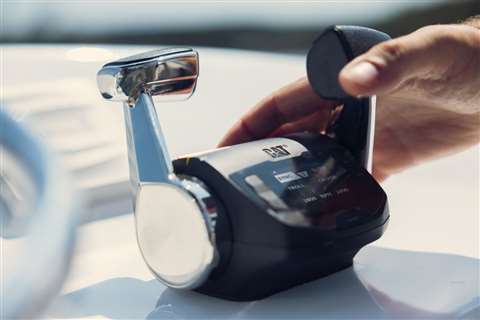Caterpillar Marine offers propulsion control for yachts
07 September 2022
 The Cat MPC100 propulsion control system is suited for yachts, mega-yachts, sport fishing boats and light patrol vessels. (Photo: Caterpillar Marine)
The Cat MPC100 propulsion control system is suited for yachts, mega-yachts, sport fishing boats and light patrol vessels. (Photo: Caterpillar Marine)
Caterpillar Marine’s new Cat MPC100 Powertrain Control System provides engine and transmission control for single- and twin-engine configurations with up to eight command stations. Its modern design, ergonomics, plug & play integration and ease of operation are particularly adapted for yachts, mega-yachts, sport fishing boats and light patrol vessels.
The system is suited for use with Caterpillar Marine’s electronically controlled engines – including the C32B engine and monitoring services – plus is compatible with major marine transmission manufacturers. The main propulsion control unit, an integrated control lever head, side-mount control assembly, backup power and control panel are all integrated with Cat marine displays, providing built-in control of the engines, transmissions and trolling valves.
“The new MPC100 offers an innovative propulsion control system for Cat-powered vessels. It is capable of performing in extreme conditions and provides operators with reliable efficiency at any given time,” said Alex Berg, Caterpillar Marine global head of yachting. “Additionally, the main processor of MPC100 incorporates an innovative built-in redundancy system that supports backup power to ensure safe and continuous operation of the main control systems.”
A variety of configuration options are available to enable control of powertrain arrangements in various marine applications.
STAY CONNECTED




Receive the information you need when you need it through our world-leading magazines, newsletters and daily briefings.
POWER SOURCING GUIDE
The trusted reference and buyer’s guide for 83 years
The original “desktop search engine,” guiding nearly 10,000 users in more than 90 countries it is the primary reference for specifications and details on all the components that go into engine systems.
Visit Now
CONNECT WITH THE TEAM










